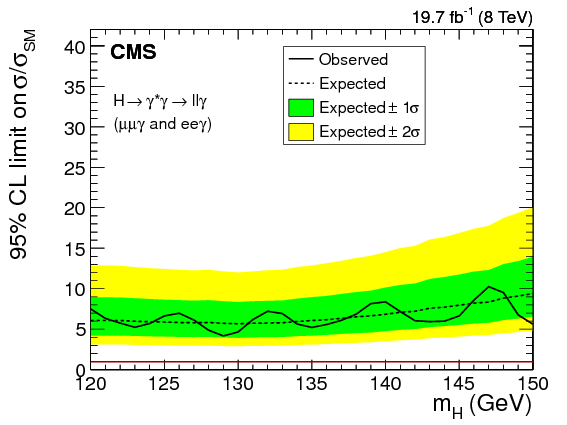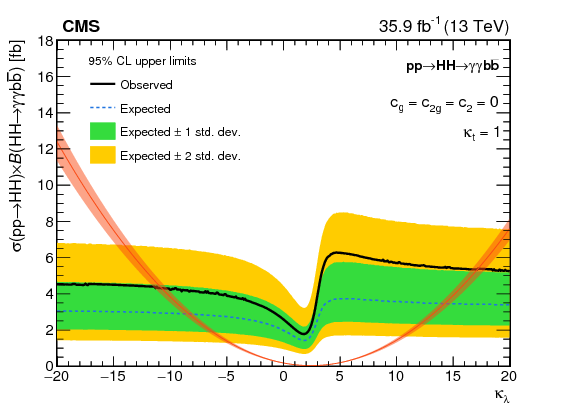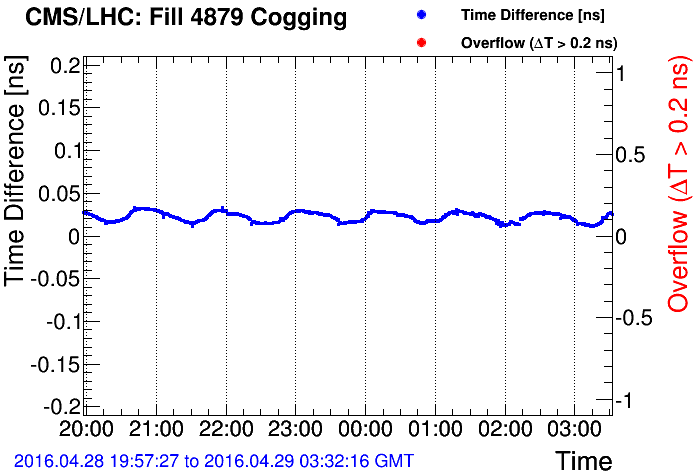Andrey Pozdnyakov
Hello Internet, welcome to my web page.

My name is Andrey, and I am a member of the CMS experiment at the LHC since 2006, when I started working on my master’s degree at Moscow Institute of Physics and Technology (Russia). After that I joined a PhD program at Northwestern University (US) and defended my PhD thesis [1] in 2015. Then I moved to a postdoc position at National Central University (Taiwan), based at CERN, where I was involved in multiple projects and data analyses. After 3 years, I moved to my second postdoc position at RWTH Aachen University (Germany), where I continue my research at CMS experiment. To get an idea about some of the work I’ve done read below.
Early data analysis
At an early stage of the LHC operation, at √s = 0.9 and 7 TeV, I performed a measurement of the charged tracks multiplicity (a.k.a. dN∕dη) [2]. It was important for tuning the minimum bias process in event generators and for the purpose of cross-calibration between CMS, ATLAS and Alice experiments [3]. Related to that study we also measured the rate of events with one or more tracks in the central region of the detector. This measurement was used as an alternative method to determine the luminosity of the LHC in pp collisions. The same method was also implemented by ATLAS and Alice experiments thus allowing for cross-comparison between experiments [4].
At the beginning of the CMS operation I also helped to perform calibration of the Hadronic Calorimeter (HCAL) with isolated tracks [9]. I wrote a piece of code that collected information of the tracks and HCAL hits needed as inputs to the minimization algorithm. I was also an expert for the HCAL conditions monitoring and maintaining its database.
When more data was collected, I started to work on some of the most interesting analyses at CMS – searching for the Higgs boson!
Searches for the Higgs boson
The discovery of the Higgs boson was announced in 2012 using the two golden channels: H → ZZ → 4ℓ and H → γγ. Unfortunately, I was not personally working on those two analysis at the time. Instead, I was involved in H → ZZ → 2ℓ2ν analysis [5, 11], where I contributed to data-driven methods for tt background estimation, a clean-up procedure of the detector noise events, the performance study of various missing energy variable definitions and optimization of the analysis selection. I then also worked on H → ZZ → 4ℓ decay and explored the multi-class MVA tools in TMVA package for the purpose of spin/parity hypothesis separation of the newly discovered Higgs boson [10].
In the next stage of the LHC operation at √s = 8 TeV I started to work on a new channel of the Higgs boson decay: H → γγ → ℓℓγ* (referred to as Dalitz decay), which lead to the paper publication [8] and my PhD thesis [1]. This channel has a small branching fraction in the Standard Model (SM), such that we do not expect to observe it with the current data. However, an enhancement of the production in the theories beyond the Standard Model (BSM) is possible. In the analysis we set an upper limit on the decay rate of this channel at about 6 times the SM prediction for mH = 125 GeV, at √s = 8 TeV, see Figure 1. A couple years after that we also released the same analysis of the data set at √s = 13 TeV. I was involved in that analysis as well, helping NCU students to perform the study. This time it was combined with a related H → Zγ search, which resulted in the combined upper limit of about 2 times the SM prediction [7].

Starting my postdoc position at NCU I joined another Higgs analysis: a search for a pair production of the Higgs bosons at the LHC. I was one of the main contributor to the di-Higgs search in the decay channel of two b-quarks and two photons, HH → bbγγ, at 13 TeV. Similarly to the H → ℓℓγ analysis, the Higgs boson pair production cross section is too small to be measured during the LHC Run-2. Nevertheless, this cross section can be enhanced in many BSM scenarios through both resonant and non-resonant production mechanisms. The case of the resonant production, pp → X → HH, where X represents the Graviton or Radion particles, is a powerful way to probe some of the most interesting BSM models with warped extra dimensions. The HH → bbγγ decay channel has the best sensitivity of the non-resonant searches and the resonant searches at low masses (mX = 250 - 400 GeV). Our result [6] set a limit at about 20 times the SM prediction on the di-Higgs production in this decay channel. As a part of this analysis we have also performed a scan over trilinear Higgs coupling, κλ, shown in Figure 2.

Service work for CMS experiment
Besides the physics analyses I did service work for the CMS Beam Radiation Instrumentation and Luminosity group (BRIL). Within this group, from 2011 until 2018, I was responsible for the operation of the Beam Pickup Timing system (BPTX), which provides beam trigger signals to the Level-1 trigger system and subsystems of the BRIL group. I commissioned BPTX subsystem in Run-1 and Run-2 data-taking periods, and supported it throughout the whole CMS operation during that time. In addition to the beam triggers, the BPTX system provides a real-time measurement of the beam timing at the interaction point, Δt(b1 -b2) (aka cogging), which is crucial for the longitudinal alignment of the collision point at CMS. This measurement is performed via an oscilloscope acquisition and a plot like the one on Figure 3 is a result of it. A displacement of this value from zero indicates a displacement of the collision point at CMS detector by a proportional amount. At CMS displacements smaller than 0.15 ns are acceptable for normal vertex reconstruction. As a part of this work I have also developed a xDAQ monitoring application, which can display the measurements for shifters in the run control room.

Between 2016 and 2018 I participated in the beam tests for the future High Granularity Calorimeter (HGCAL) of CMS. In 2016 we tested single diode sensors where I helped with their I-V, C-V characterization before the test beam. Then, with the test beam data I measured the time resolution and its dependence on the irradiation dose to the sensor [12]. In 2017 we had multiple full Hexagon modules composed of many sensors and we were able to measure energy resolution of protons and electrons from the test beam particles. I was involved in preparing the DAQ front-end software, based on the euDAQ framework written and supported by DESY. I participated in the data-taking in three beam test sessions in 2017, and in the beam test in Summer of 2018.
In years 2020-2023 I helped with the production of the Monte Carlo (MC) simulated samples for CMS, acting as MC request manager. During that time the MC production of the Legacy sampes, corresponding to the full Run-2 data, were performed.
In my many years with CMS I have done numerous central shifts for DQM, Trigger and BRIL systems, including the on-call expert shifts for the BRIL group.
Recent work
At the moment I continue to work on CMS experiment with RWTH Aachen group. My current project is a search for Higgs boson decays to charm quarks. With the data accumulated up to now this process is not yet accessible to the level of the SM, but an upper limit on some new physics models could be achieved. In 2022 we released two searches for H → cc decay with the full Run-2 data set collected between 2016 and 2018. One analysis is done in VH production channel, and we set the stringiest limit to date on the H → cc process, at 14 times the SM value [13]. It also leads to the stringiest constraint on the coupling of the Higgs boson to charm quark, 1.1 < | κc| < 5.5. The second analysis is looking into gluon-fusion production channel of the Higgs and here we set a limit at 45 times the SM [14]. I reported these results, along with other ways one can constrain Higgs-charm coupling at the LHC, at ICHEP-2022 conference. The proceedings for my talk can be found at [15].
Thanks for reading. For more detailed info see my CV.
References
[1] Andrey Pozdnyakov, “Search for the Higgs Boson Decays to a Photon and Two Leptons with Low Dilepton Invariant Mass”, Northwestern University, Dec. 2015, CMS-TS-2016-001, CERN-THESIS-2015-256, [arXiv:1601.00790]
[2] “Pseudorapidity distributions of charged particles in pp collisions at √s = 7 TeV with at least one central charged particle”, CMS Collaboration, CMS-PAS-QCD-10-024, Apr. 2011
[3] “Minimum Bias and Underlying Event Working Group documents”
[4] “Luminosity Study: Events Selected with a Central Track” Andrey Pozdnyakov, Michael Schmitt, Mayda Velasco, CMS Internal presentation, CMS-DP-2011-004, Jun. 2011
[5] “Search for the standard model Higgs boson in the H → ZZ → 2ℓ2ν channel in pp collisions at √s = 7 TeV”, CMS Collaboration, 2012, JHEP 03, 040 (2012), [arXiv:1202.3478]
[6] “Search for Higgs boson pair production in the final state containing two photons and two bottom quarks in proton-proton collisions at √s = 13 TeV”, CMS Collaboration, 2018, Phys. Lett. B 788, CMS-HIG-17-008, doi:10.1016/j.physletb.2018.10.056, [arXiv:1806.00408]
[7] “Search for the standard model Higgs boson in the dilepton plus photon channel in pp collisions at √s = 13 TeV, CMS Collaboration, 2018, JHEP 11, 152 (2018), CMS-HIG-17-007, doi:10.1007/JHEP11(2018)152, [arXiv:1806.05996]
[8] “Search for a Higgs boson decaying into γ*γ to ℓℓγ with low dilepton mass in pp collisions at √s = 8 TeV”, CMS Collaboration, 2015, Phys. Lett. B 753, CMS-HIG-14-003, doi:10.1016/j.physletb.2015.12.039, [arXiv:1507.03031]
[9] A. Anastassov et al., “Single Particle Response in the CMS Calorimeter”, CMS Internal AN-2010/179
[10] G. Bauer, et al., “Examination of an excess of events in the search for the standard model Higgs boson in the H → ZZ* → 4ℓ channel”, CMS Internal AN-2012/414
[11] Joe Bochenek, et al., “Search for the Higgs boson in the H → ZZ* → 2ℓ2ν decay channel in pp collisions with the CMS detector”, CMS Internal AN-2012/138
[12] N. Akchurin et al, “First beam tests of prototype silicon modules for the CMS High Granularity Endcap Calorimeter”, 2018 JINST 13 P10023
[13] CMS Collaboration, “Search for Higgs boson decay to a charm quark-antiquark pair in proton-proton collisions at √s = 13 TeV”, CMS-HIG-21-008, Phys.Rev.Lett.131(2023)061801, [arXiv:2205.05550]
[14] CMS Collaboration, “Inclusive search for a boosted Higgs boson decaying to a charm quark pairs in proton-proton collisions at √s = 13 TeV”, CMS-HIG-21-012, Phys.Rev.Lett.131(2023)041801, [arXiv:2211.14181]
[15] Andrey Pozdnyakov, “Constraints on the Higgs-charm coupling by CMS”, in proceedings of ICHEP-2022 conference, PoS(ICHEP2022)505